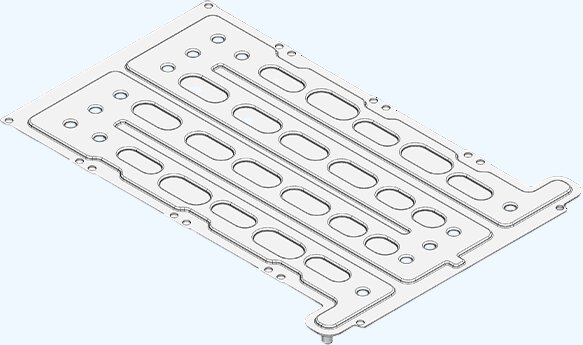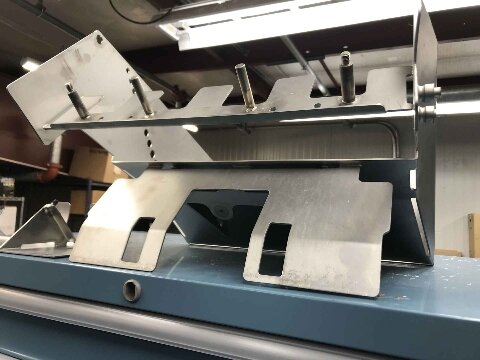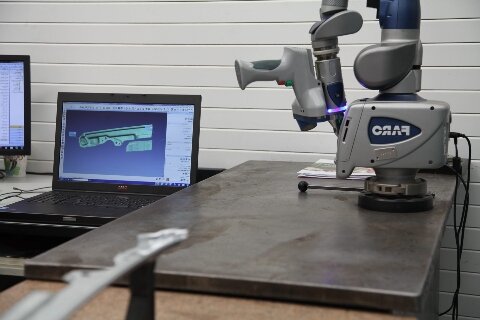Car manufacturers face rising costs and tight production schedules. Many struggle to find reliable sheet metal fabrication services that deliver quality parts on time. The right combination of techniques and materials helps create durable automotive components while keeping costs low.
Automotive sheet metal fabrication uses cutting, bending, and welding techniques to shape metal into car parts. Common materials include steel, aluminum, and titanium. Each material has unique properties that suit specific parts, like body panels or frames.
The automotive industry needs prototype parts for new designs and mass-produced components for vehicle assembly. Let’s examine the main fabrication techniques and materials that make this possible.
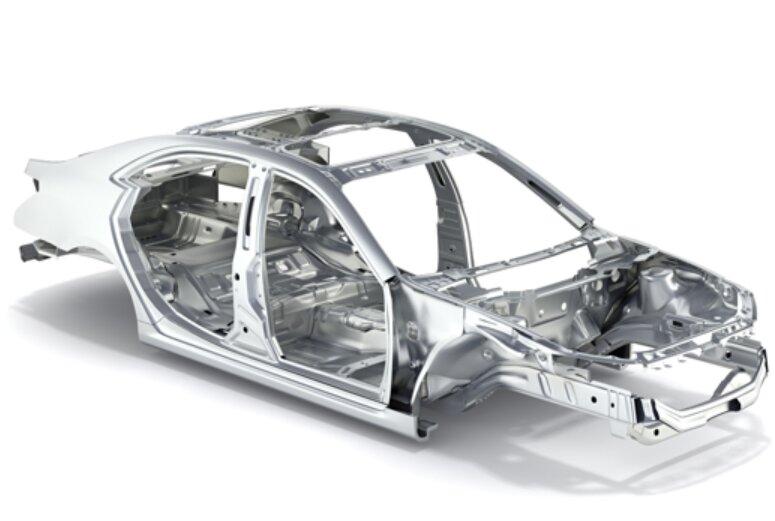
What Is Automotive Sheet Metal Fabrication?
Automotive sheet metal fabrication involves cutting, bending, and joining metal sheets to create car parts, including body panels, frames, and structural components. The process starts with flat metal sheets, which are transformed into 3D shapes using specialized tools and techniques.
This method is widely used because it’s efficient and produces high-quality parts. It allows manufacturers to create complex designs while maintaining strength and durability.
Why Choose Sheet Metal Fabrication in the Automotive Industry?
For several reasons, sheet metal fabrication is a popular choice in the automotive industry. It offers precision, flexibility, and cost-effectiveness, making it ideal for producing car parts. Let’s break down the key benefits.
Precision and Accuracy
Modern cars require parts that fit together perfectly. Sheet metal fabrication uses advanced tools like laser cutters and CNC machines to achieve high precision. This ensures that every part meets exact specifications, reducing errors and improving overall quality.
Customization and Design Flexibility
Car designs are constantly evolving. Sheet metal fabrication allows for customization, making creating unique shapes and features easy. This method can handle various designs, whether a sleek body panel or a complex frame.
Cost-Effective Production
Producing car parts can be expensive, but sheet metal fabrication helps keep costs down. It uses materials efficiently and reduces waste. Automated processes also speed up production, saving time and money.
Lightweight Parts
Reducing a car’s weight improves fuel efficiency and performance. Sheet metal fabrication uses lightweight materials like aluminum, which are firm but not heavy. This makes vehicles more efficient without sacrificing safety or durability.
Durability and Longevity of Components
Cars face harsh conditions, from extreme weather to rough roads. Sheet metal fabrication creates durable and long-lasting parts. Materials like steel and titanium resist wear and tear, ensuring vehicles stay reliable for years.
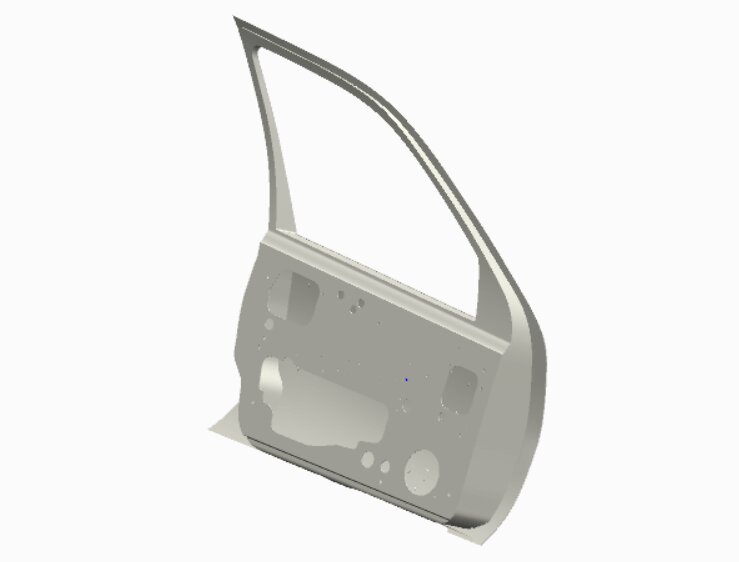
Types of Automotive Sheet Metal Components
Automotive sheet metal components are essential for a vehicle’s structure and appearance. They are made using various fabrication techniques to meet safety, durability, and design standards.
Body Panels
Body panels form a vehicle’s outer shell and include parts like doors, hoods, roofs, and fenders. Materials like high-strength steel or aluminum helps keep the car lightweight while ensuring the panels are strong and rust-resistant.
Chassis and Frame Parts
The chassis and frame are a vehicle’s backbone. These parts support the vehicle’s weight and provide strength. They are made from rigid materials like high-strength steel to handle the stresses of everyday driving while keeping the car safe.
Structural Reinforcements
Structural reinforcements add extra strength to the frame and body. These parts help absorb impact during a crash, protecting the vehicle’s occupants. Fabrication methods like stamping and welding create these parts with high precision.
Underbody and Underhood Components
Underbody and underhood components include the exhaust system and engine mounts. These parts need to be tough to handle heat and wear. Fabrication techniques like laser cutting and bending help ensure these parts fit perfectly and function properly in harsh conditions.
Types of Sheet Metals Used in Automotive Fabrication
Choosing the correct type of sheet metal is essential in automotive fabrication. Each metal offers different benefits, including strength, weight, and durability. Below are some of the most common metals used in car manufacturing.
Stainless Steel
Stainless steel is strong and resistant to rust. It is commonly used for parts that withstand stress and harsh conditions, like exhaust systems and structural components. Its resistance to corrosion makes it a reliable choice for automotive parts.
Aluminum
Aluminum is lightweight but strong. It is often used in body panels and engine components. This metal helps reduce the overall weight of the vehicle without sacrificing strength. Aluminum also resists rust, making it a good choice for parts exposed to the weather.
Cold Rolled Steel
Cold-rolled steel is made by shaping steel at room temperature. This process gives it a smooth finish and high strength. It is often used for parts that need to be precise, like structural components. Cold-rolled steel is also cost-effective and easy to form.
Galvanized Sheet
Galvanized steel has a zinc coating that helps protect it from rust. It is commonly used in body panels and underbody parts exposed to moisture. The coating makes it resistant to corrosion, essential for parts that face harsh weather.
Titanium
Titanium is robust and lightweight. It resists corrosion, making it ideal for engine components and exhaust systems. However, titanium is expensive, so it is used in specific high-performance applications where strength and lightness are needed.
Magnesium
Magnesium is one of the lightest metals available. It is often used in parts like wheels and engine blocks, helping reduce a vehicle’s weight. However, it is more prone to rust and needs special protection.
Copper and Brass
Copper and brass are used in wiring, radiators, and brake lines. Copper is known for its excellent conductivity, while brass is strong and corrosion-resistant.
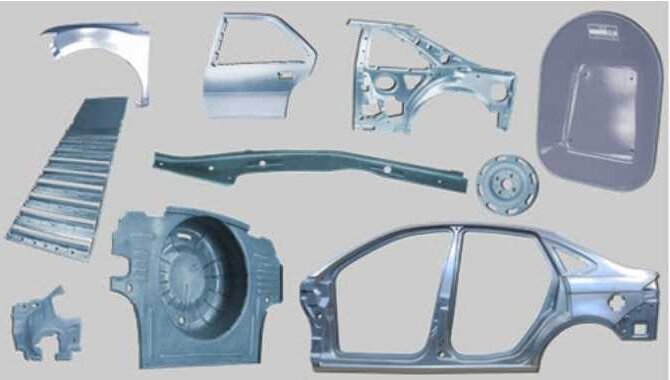
The Automotive Sheet Metal Fabrication Process
The automotive sheet metal fabrication process includes several steps to shape metal into the parts needed for vehicles. These steps cover cutting, forming, and joining the metal to create precise components that meet the required standards.
Automotive Sheet Metal Cutting Techniques
Cutting is the first step in shaping sheet metal. Different methods are used depending on the material and the design.
Laser Cutting
Laser cutting uses a focused beam of light to cut through metal. It provides high accuracy and smooth edges. This method works well for thin metal sheets and designs that require precision.
Plasma Cutting
Plasma cutting uses a hot plasma torch to melt and cut through metal. It’s faster than laser cutting but may leave rougher edges. Plasma cutting is ideal for thicker metals and when a finer finish is unnecessary.
Shearing
Shearing uses two blades to cut metal by pressing it between them. This method is quick and efficient, perfect for straight cuts in large sheets. Shearing is commonly used in high-volume production to cut medium to thin materials.
Automotive Sheet Metal Forming Techniques
Forming is the process of shaping metal into the required parts. This is done by applying force to bend or press the metal into specific shapes.
Bending
Bending involves using a press brake to shape metal at precise angles. It’s often used for parts like brackets or panels that need sharp, clean bends.
Stamping
Stamping uses large presses to form metal into specific shapes. It is fast and accurate, making it ideal for mass production. Stamping is commonly used for complex parts like body panels.
Welding and Joining Techniques
Once the metal parts are shaped, they need to be joined together. Welding and riveting are the most common methods.
Welding
Welding uses heat to melt and fuse two metal pieces. It creates a strong, permanent bond, which is essential for parts that need to bear heavy loads, like the vehicle frame.
Riveting
Riveting uses metal fasteners to join metal parts. It is different from welding because the rivets can be removed and replaced. Riveting is used when parts need to be disassembled later or when welding is not an option, like in thin metal sheets.
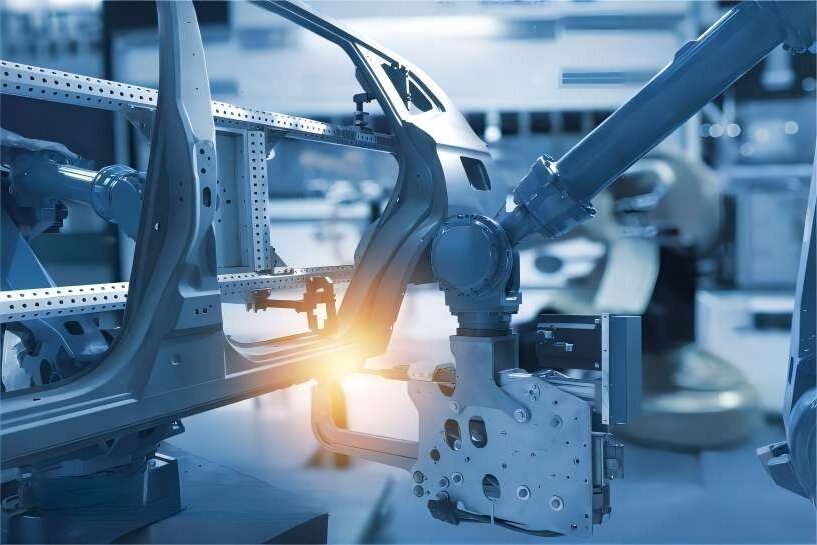
Cost Factors in Automotive Sheet Metal Fabrication
The cost of automotive sheet metal fabrication depends on several factors. Understanding these factors can help manufacturers plan better and manage expenses.
Materials and Their Impact on Costs
The materials used play a significant role in determining the overall cost. Metals like stainless steel and titanium are more expensive than aluminum or cold-rolled steel.
Stronger and lighter materials may cost more but often provide better performance and durability. While they increase the upfront cost, they can offer long-term value.
Labor and Operational Costs
Labor costs refer to the wages of workers operating machines and handling fabrication processes. Skilled workers, like welders and engineers, often earn higher salaries.
Operational costs cover things like factory maintenance, energy use, and transportation. These costs can add up, especially when the production process is complex or involves high volumes.
Investing in Advanced Machinery
Investing in advanced machinery, such as laser cutters or robotic welders, can be expensive initially. However, these machines improve production speed and accuracy.
They reduce errors and waste, leading to lower costs over time. While the initial investment is high, the efficiency gains can make it a smart choice for mass production.
Conclusion
Automotive sheet metal fabrication involves several key processes, from cutting and shaping to joining metal parts. Each step is essential for creating strong and durable vehicle components. The choice of materials, labor costs, and machinery used all impact the final price. It’s important to balance quality and cost to ensure the best results.
Contact us today if you want high-quality aluminum fabrication for your automotive projects. We can help bring your designs to life with precision and efficiency. Contact us now for a quote!
Hey, I'm Kevin Lee

For the past 10 years, I’ve been immersed in various forms of sheet metal fabrication, sharing cool insights here from my experiences across diverse workshops.
Get in touch

Kevin Lee
I have over ten years of professional experience in sheet metal fabrication, specializing in laser cutting, bending, welding, and surface treatment techniques. As the Technical Director at Shengen, I am committed to solving complex manufacturing challenges and driving innovation and quality in each project.

